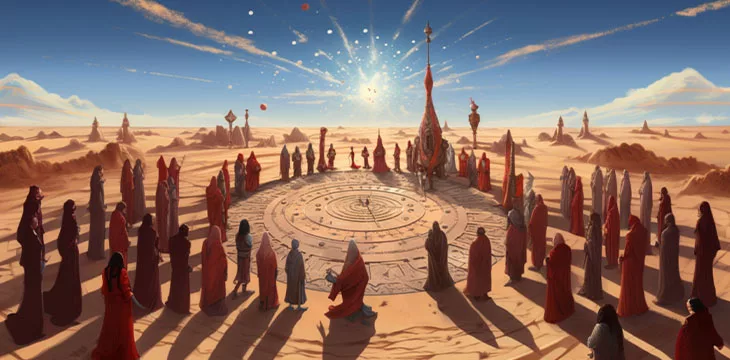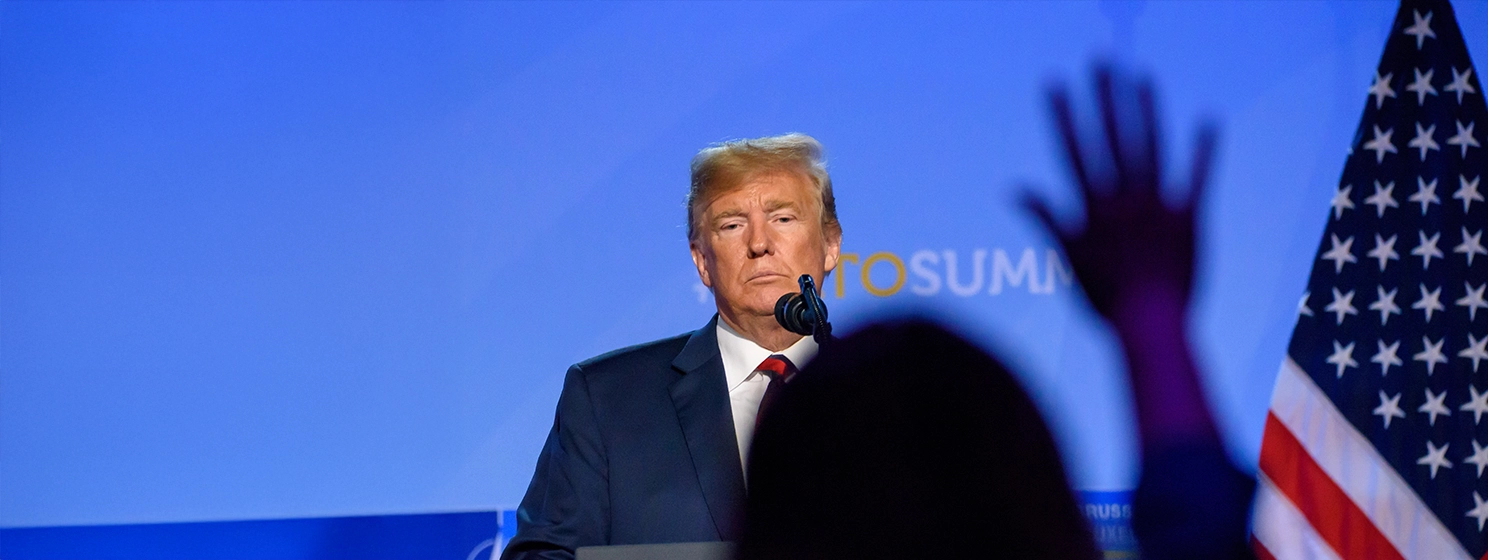|
Getting your Trinity Audio player ready...
|
In the realm of Bitcoin, BTC, BCH, and BSV blockchain have emerged as distinct tribes with contested claims over the Bitcoin moniker, each with its own vision and community. However, a new phenomenon has been quietly unfolding amid this tribalism—the rise of Ordinals Nomads. These nomads traverse the typically siloed landscapes of the segregated blockchain economies, transcending the boundaries of hostile tribes and embracing the transformative potential of token technology.
In this article, I’m not saying anything definitive because this is a novel, emergent phenomenon, but I want to explore the concept of Ordinals Nomads and how their existence represents a bridge between the fragmented factions within the Bitcoin ecosystem that may converge us into a single, collectively valuable economy once again.
The era of segregated tribes
The Bitcoin community has witnessed a profound division resulting in the formation of segregated tribes, primarily represented by BTC, BCH, and BSV blockchain. Each tribe has its own set of beliefs, protocol variations, and ideological factions, often engaging in heated debates and contentious discussions. This tribalism has impeded collaboration and hindered the progress of Bitcoin as a whole, fracturing the community into distinct camps with limited interoperability. After nearly a decade of bickering and a pretty nasty Civil War, there are multiple versions of Bitcoin out of consensus and an utter lack of clarity or consensus on what Bitcoin is for or how it does anything it does. Near complete derision, much like the rest of modern society.
However, amidst this landscape of division, a new phenomenon has emerged from the least likely and most brutally toxic branch: BTC.
The creation of the Ordinals protocol by Casey Rodarmor marked a significant milestone in the evolution of the broader Bitcoin ecosystem. Rodarmor, a visionary developer, recognized the need for a standardized framework that could transcend the notion of individual sats to create an elegantly simple token standard that is still intrinsically satoshis (the smallest unit of Bitcoin).
With this goal in mind, he conceptualized and implemented the Ordinals protocol—a revolutionary technology that enables the creation of Ordinals inscriptions on the Bitcoin blockchain, which are tokens with all the security and value of a sat plus whatever is inscribed upon them.
Ordinals inscriptions represent a new form of expression within the Bitcoin network. They allow individuals to attach unique identifiers, known as Ordinals, to their transactions, providing a means of categorization and enhanced traceability. This innovation has sparked an explosion of inscriptions on BTC, attracting users from different tribes to embrace this open and inclusive method of interaction on BTC, but using methods that were perfected on the BSV blockchain.
The adoption of Ordinals inscriptions on BTC has brought about a paradigm shift in how participants within the Bitcoin ecosystem engage with the blockchain. By attaching ordinals to their transactions, users can establish connections, form communities, and collaborate across tribal boundaries. This expansion of communication and collaboration has fostered a sense of unity and inclusivity within the Bitcoin community, transcending the limitations imposed by the segregated tribes.
Furthermore, the explosion of Ordinals inscriptions on BTC has opened up exciting possibilities for innovation and development. As the number of ordinals inscriptions grows, so does the potential for novel applications and use cases within the Bitcoin ecosystem, as we have seen with the integration of BTC and BSV-based Ordinals tokens to deploy Bitcoin-fueled DNS using the OrdFS.network protocol, for example.
The Era of Nomads
Suddenly, Jack Liu and Josh Petty, pillars of the BSV economy, are headline speakers at BTC Ordinals conferences, and “BTC only” enterprises are working with BSV blockchain-born teams to implement technology that creates real economic value. This is a seismic shift in culture!
“Ordinals Nomads” are individuals or entities who have embraced the transformative power of token technology to transcend the tribal boundaries within the Bitcoin ecosystem such that they are welcome and embraced on all sides of the divide. These nomads do not pledge allegiance to any particular tribe; instead, they navigate the Bitcoin landscape freely, utilizing the innovative capabilities offered by tokenization and free market opportunity.
Ordinals Nomads embrace the concept of interoperability and recognize the potential for collaboration across economies. Through the utilization of token technology, they unlock new avenues for innovation, enabling the seamless transfer of assets and ideas across various blockchains. These nomads are driven by the belief that the true power of all digital assets lies in their ability to connect and collaborate, rather than fragment and isolate.
As a veteran of the Bitcoin Civil War, I can attest that this is a breath of fresh air.
The power of tokens
Tokens serve as a unifying force for Ordinals Nomads, empowering them to transcend the tribal boundaries that have hindered progress in the Bitcoin ecosystem. It’s not about the base layer network or the underlying asset. The token represents the real-world opportunity to do business on chain—which is the lesson that folks in the big blocker tribe have been pushing for years now. This is a victory!
Tokens represent digital assets that can be created, managed, and transferred across different blockchains. By leveraging tokenization, Ordinals Nomads can participate in truly decentralized finance ecosystems, engage in cross-chain transactions of real value, and unlock new forms of value exchange both at the micro and macro scale of digital trade.
The emergence of standardized token protocols, such as with Ordinals and its variants, facilitates the potential for seamless integration and interoperability across various blockchain networks. Ordinals Nomads can create and interact with tokens that adhere to these protocols, enabling them to move effortlessly between different blockchains and engage with diverse communities. This tokenized flexibility allows nomads to explore innovative use cases, participate in truly decentralized applications, and contribute to the growth of the overall blockchain ecosystem.
Sunshine and rainbows?
The Bitcoin ecosystem remains fragmented. Small blockers are still vile and malicious toward big blockers who remain suspicious and resolute. The rise of Ordinals Nomads offers a glimpse into a more interconnected and collaborative future largely because the partakers in the technology entered the blockchain space after the Civil War had cooled down. They don’t have the scars that the older Bitcoiners bring to the conversation, so they have fresh eyes to look upon a fertile landscape.
These nomads, unrestricted by tribal boundaries, embrace the transformative potential of tokens to bridge the gaps between segregated tribes. By fostering interoperability and encouraging collaboration, Ordinals Nomads serve as catalysts for innovation and progress in the broader landscape. As the concept of Ordinals Nomads continues to evolve, it just might pave the way for a more unified and inclusive future for consolidation of value into Bitcoin in a way that can benefit us all.
The Red Queen
Bitcoin exists to facilitate trade and to absorb all vectors that facilitate trade in less efficient ways. The ordinals protocol is a fractal addition to the already complicated SHA256 landscape, and I think that while it represents a new variable, there can only be one. And for reasons of pragmatism, the Ordinals Nomads benefit in all outcomes.
Watch: Kurt Answers Viewer’s Questions about Ordinals in BTC and BSV + Bitcoin Conference 2023

 12-18-2025
12-18-2025 




